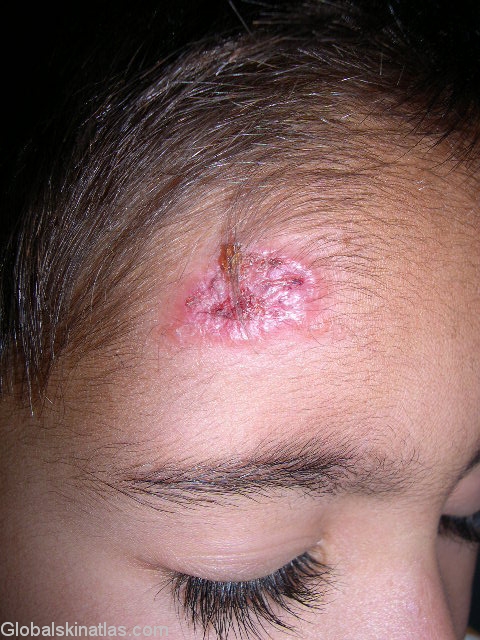

Diagnosis: Leishmaniasis
Description: erythematous ulcerated crusted plaques
Morphology: Red,scaly
Site: Forehead
Sex: M
Age: 4
Type: Clinical
Submitted By: Shahbaz Janjua
Differential DiagnosisHistory:
This 4-year-old boy presented for the evaluation of two non tender erythematous ulcerated crusted plaques present on the face for one and a half years. The plaques did not respond to topical mupirocin, topical steroids and oral rifampicin. A smear obtained from the ulcer showed leishman bodies.
The leishmaniases are caused by different species belonging to the genus Leishmania a protozoa transmitted by the bite of a tiny 2 to 3 millimetre-long insect vector, the phlebotomine sandfly.
Leishmaniases occur in three forms:
(1) visceral disease, characterized by fever, weight loss, anemia, and enlargement of the liver and spleen developing over months to years.
(2) cutaneous disease, manifested by skin ulcers on exposed parts of the body developing over weeks to months.
(3) mucocutaneous disease, characterized by disfiguring erosions of the mucous membranes of the nose, mouth, and throat.
The topic is discussed in the following Dermatology Online Journal article.
